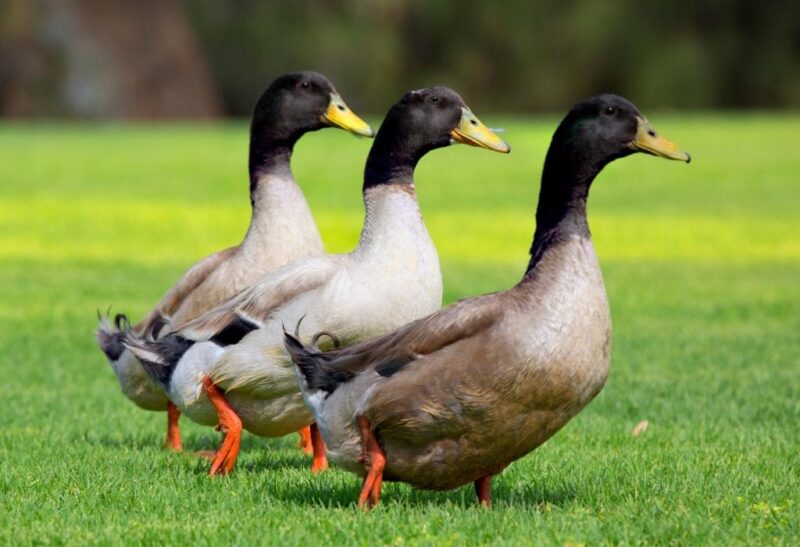Ducks are considered waterfowl or birds that thrive near bodies of water, particularly favoring ponds, rivers, and streams.
Hens, or female ducks, are characterized by their dull, brown feathers, while drakes, or male ducks, have brightly-colored feathers. Natural adaptation has allowed them to have evolved feathers that serve several biological functions.
Ducks have feather because it helps them float on water and fly in the air, protect them from varying weather conditions, allow them to become water and wear-resistant, and help them find mates.
If you want to know more about ducks’ feathers, their anatomy, the purposes they serve, how ducks take care of them, and other interesting questions, read this article to gain substantial knowledge today!
Table of Contents
Why Do Ducks Have Feathers?
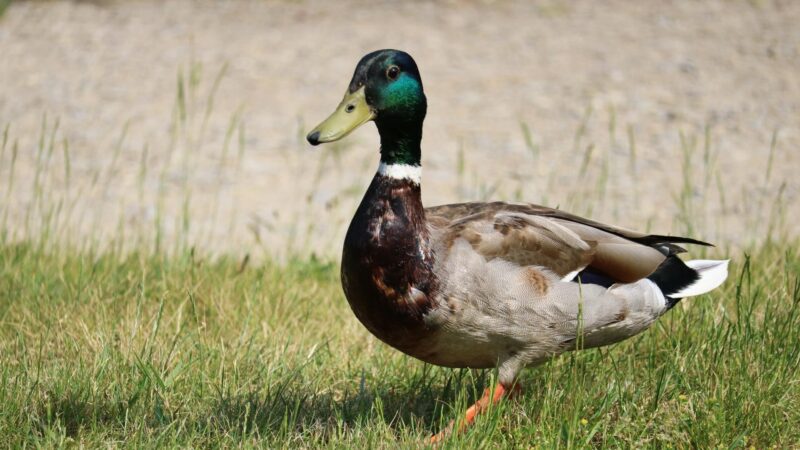
- Floating on water. Ducks have specialized feathers that have a system of tightly interlocked barbs that trap and hold air bubbles which then allows ducks to float on water.
- Protection from various weather conditions. With feathers, ducks can produce and conserve heat. This allows them to regulate their body temperatures with ease, even if outside temperatures are low. Hence, they’re able to inhabit colder areas.
- Water and wear resistance. Beta-keratin, a tough material that makes up feathers, helps ducks become resistant to water, as well as wearing and tearing. This means they can stay dry even when they stay on the water for long periods of time or when it’s raining.
- Flying. Ducks have primary feathers (outer wing feathers) which help them thrust when flying and secondary feathers (inner wing feathers) that aid in lifting them with the wind. Generally, ducks are great fliers. However, not all ducks can fly. Also, they can travel long distances during migration, all thanks to their feather structure.
- Finding mates. Drakes have brightly-colored feathers that help them acquire mates during courtship activities. Hens are mostly drawn to drakes with attractive feather coloration and social display through mating calls and dances, according to this study.
Why Are Duck Feathers Waterproof?
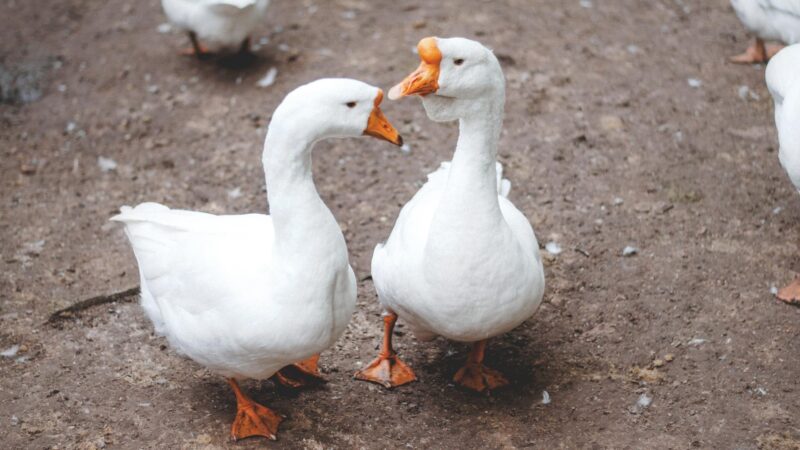
Duck feathers are waterproof. Its feathers are dominantly made of a protein called beta-keratin, which is completely insoluble in organic solvents and water. Therefore, it makes duck feathers resistant to water.
Why Does a Duck Have So Many Feathers?
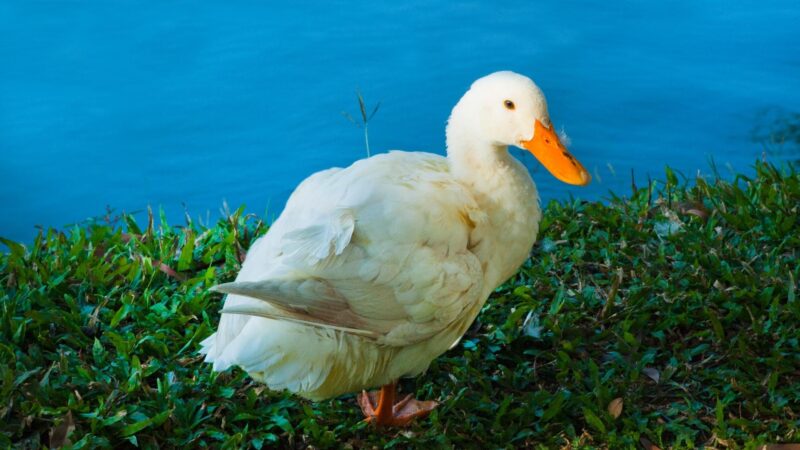
Ducks have so many feathers. Each feather type serves a different biological purpose, which is for the duck to ensure its survival.
Types of Duck Feathers
The Contour Feathers
Contour feathers attach directly to the skin and make up the outer surface covering the duck’s body. This also includes flight feathers, which help them maneuver, and overlapping body feathers that allow birds to attain smooth aerodynamic shapes when flying.
These feathers have vanes or smooth feather surfaces made from interlocked barbs that also help ducks stay warm during cold conditions.
Aside from their biological functions, contour feathers also represent a duck’s overall appearance and physical structure.
The Down Feathers
Down feathers are found beneath the contour feathers and are soft and fluffy in both texture and appearance. They’re essential feathers as they’re responsible for providing ducks with insulation and waterproofing abilities.
Ducklings are first born with downy tufts but are not developed enough to help in thermoregulation. As they mature, the growth of contour feathers will overlap with down feathers.
Down feathers are usually used to create pillow and cushion stuffings, beddings and comforters, and coats and jackets such as this product by East Coast Bedding.
The Semiplumes Feathers
Semiplumes are a special type of contour feathers that fill out the body contours of the duck but are mostly hidden beneath the other feathers and may be involved in courtship as these feathers form the display plumage.
They’re located between the contour and down feathers and serve as an undercoat which also helps insulation.
The Filoplumes Feathers
Filoplumes are short, hair-like feathers with a few barbs and barbules at the tips that help maintain the position of the flight feathers.
In addition to this, the filoplumes are used to sense the position of contour feathers, which may also provide ducks with sensory information when flying, and monitoring airspeed.
How Do Ducks Take Care of Their Feathers?
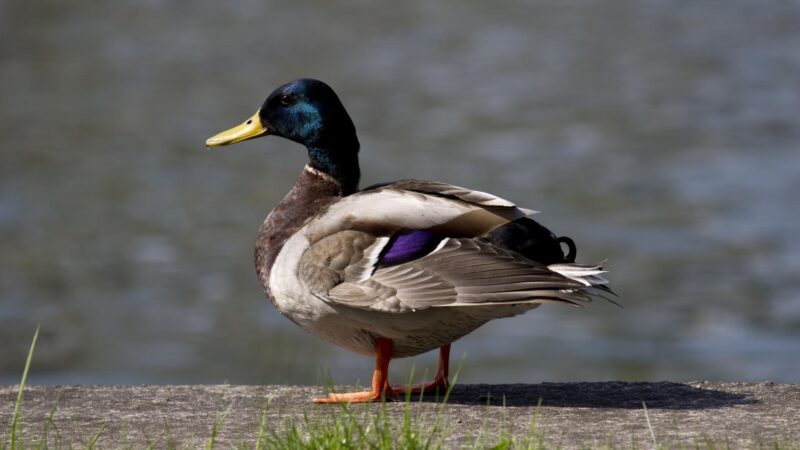
All ducks clean and maintain their feathers through an essential grooming process called preening. Ducks regularly preen themselves, usually after bathing.
Ducks have a preen gland located near the base of their tails that produces oil that ducks spread and coat all over their feathers, using their beaks, which helps maintain their feathers’ water resistance and flexibility, as well as provide a layer of protection against parasites and unwanted microorganisms.
When preening, ducks also remove already present dirt and parasites on their feathers through fluffing, then rearrange them to attain an optimal position necessary for both flight and body temperature regulation.
In places ducks can’t reach using their beaks, such as their heads, they will oil their feathers and then scratch their heads to distribute the preen oil.
How Are Duck Feathers Harvested?
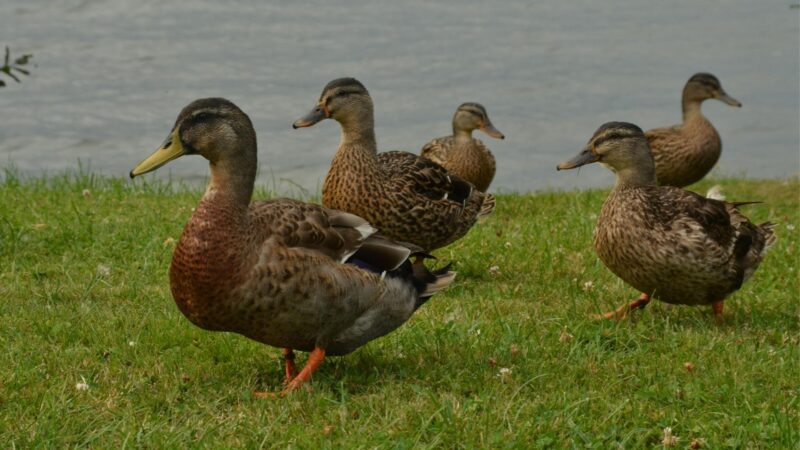
Duck feathers are removed either by hand or through the use of a plucking machine. Feathers are usually by-products of slaughtering ducks when they’re bred in large groups to produce meat.
Ducks are first slaughtered, typically around their first molting, then scalded in hot water for 1 to 3 minutes. Scalding is optional, but it makes removing feathers a whole lot easier.
Then, the flight feathers are removed by hand, followed by the body and down feathers. But they may be removed by using a plucking machine, which is commonly used by companies. Lastly, the feathers are dried and sorted before they’re packed and ready to be distributed.
Do Ducklings Have Feathers?

Ducklings have feathers. However, ducklings only have down feathers and have yet to grow contour feathers which usually begin development around three to six weeks after they’re born according to a biologist.
Frequently Asked Questions
Do Ducks Wag Their Tails When They’re Happy?
Ducks wag their tails when they’re happy. A duck owner attests that their ducks respond to them when they’re called and wag their tails when they’re feeling happy.
Tail-wagging is also part of courtship behavior displayed by both male and female wood ducks, as reported by this study.
Are Duck Feathers Used in Pillows?
Duck feathers are used in pillows, specifically they down feathers once they’re processed by hand or by plucking machines.
Why Can’t Ducks Get Wet?
Ducks can’t get wet because of their waterproof feathers. It is mainly made up of beta-keratins, a type of protein that is water-insoluble. They also regularly clean themselves through preening, which fortifies their water-resistant feathers.
What Makes a Duck Swim Smoothly in the Water?
Ducks have webbed feet, which allows them to glide effortlessly through the water. While swimming, they maneuver themselves by pushing their legs and feet backward and downward. Their toes help them control their resistance against water which helps them move efficiently.
Since their feathers trap air and allow them to float, when they want to dive underwater, they simply push the collected air bubbles out of their feathers and then submerge half of their bodies through the water.
Scoter and eider ducks paddle and steer through water by keeping their wings partially open compared to other swimming birds who hold their wings tightly against themselves while swimming.
Ducks generally also have hollow bones. Aside from helping them fly, it contributes to their smooth swimming abilities.
How Do Ducks Dry Themselves?
Ducks will simply shake their bodies and feathers to dry. Then, they will preen to remove dirt and grime, as well as reapply the waterproof oil all over their feathers.
Ducks have four feathers, namely the contour feathers, down feathers, semiplumes, and filoplumes that help them float, fly, be protected against bad weather, keep dry, and attract suitable mates.
Ducklings have feathers too, but they’re initially only the down feathers as they will grow their contour feathers later on.
All ducks take care of their feathers through preening, a grooming process where they spread waterproof oil throughout their feathers regularly.
List of Sources
Bossema, I., Kruijt, J. P. (1982). Male Activity and Female Mate Acceptance in the Mallard (Anas platyrhynchos). Behaviour.
Korschgen, C. E., Fredrickson, l. H. (1976). Comparative Displays of Yearling and Adult Male Wood Ducks. Searchable Ornithological Research Archive.
Ducks: The Familiar Swimmer. (2012). Boston University.
Dean, W. F., Sandhu, T. S. Domestic Ducks. Cornell University College of Veterinary Medicine.
